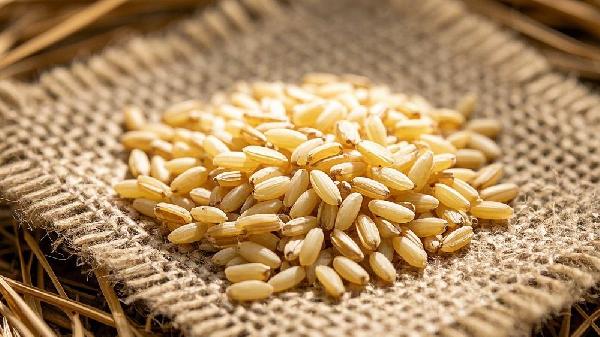If you're looking to up your protein game, nuts are one of the easiest and most delicious ways to do it. Sure, they might seem like tiny little snacks, but don't underestimate them—some pack a serious protein punch. Whether you're sprinkling them on salads, blending them into smoothies, or just grabbing a handful for a quick snack, nuts can help you hit your protein goals without feeling like you're choking down another bland chicken breast. Plus, they come with bonus nutrients like healthy fats, fiber, and vitamins that keep your body running smoothly. So, let’s break down which nuts give you the most bang for your protein buck and how to work them into your meals like a pro.
Why Nuts Are a Protein Powerhouse
Nuts aren’t just a crunchy snack—they’re a legit protein source that also delivers healthy fats, fiber, and essential vitamins and minerals. Unlike processed protein bars or powders, nuts come in their natural, whole-food form, meaning you’re getting nutrients in the way your body knows how to use them best. The combo of protein and fat in nuts helps keep you full longer, stabilizes blood sugar, and even supports muscle recovery after workouts. And let’s be real—they’re way more satisfying than chugging another protein shake. Whether you're plant-based, keto, or just trying to eat cleaner, nuts fit into pretty much any diet.
The Top High-Protein Nuts to Add to Your Diet
Not all nuts are created equal when it comes to protein content. Some, like peanuts (technically a legume, but we’ll let it slide), deliver nearly as much protein as an egg per ounce. Others, like almonds and pistachios, bring extra perks like fiber and antioxidants. Here’s the lowdown on the best high-protein nuts and how to make them work in your meals.
Peanuts: The Protein King (Sort Of)
Peanuts might not be a true nut (they’re legumes, like beans), but they dominate the protein game with about seven grams per ounce. They’re also loaded with niacin, folate, and zinc—nutrients that support energy, brain function, and immunity. If plain peanuts aren’t your thing, try natural peanut butter in smoothies, or crush them over stir-fries for extra crunch. Just watch out for added sugars in flavored peanut products—stick to the unsalted, no-added-ingredient versions for the healthiest option.
Almonds: The All-Around MVP
Almonds bring about six grams of protein per ounce (that’s roughly 23 almonds), plus a solid dose of fiber and vitamin E, a powerful antioxidant. Their mild flavor makes them super versatile—toss them in yogurt, blend them into almond butter, or even roast them with spices for a savory snack. Pro tip: Soaking almonds overnight can make them easier to digest if you’re sensitive to nuts.
Pistachios: The Mindful Snacker’s Dream
Pistachios aren’t just fun to eat (hello, shell-cracking satisfaction)—they also offer about six grams of protein per ounce. They’re rich in lutein and zeaxanthin, antioxidants that support eye health, plus fiber to keep digestion smooth. Buying them in-shell slows down your snacking, which can help prevent mindless overeating. Try them in trail mix, on top of oatmeal, or even blended into pesto for a protein boost.
Cashews: The Creamy, Dreamy Option
Cashews might be known for their buttery texture, but they also pack about five grams of protein per ounce. They’re loaded with heart-healthy monounsaturated fats and magnesium, which helps with muscle function and relaxation. Use cashews to make dairy-free sauces, blend them into creamy soups, or just snack on them roasted with a pinch of sea salt.
Soy Nuts: The Underrated Heavy Hitter
Soy nuts (roasted soybeans) are the dark horse of the protein world, delivering a whopping 12 grams per ounce. They’re a complete protein, meaning they contain all nine essential amino acids—rare for plant-based foods. Swap regular milk for soymilk in your coffee or smoothies, or toss soy nuts into salads for extra crunch.
Walnuts, Pine Nuts, and Brazil Nuts: The Supporting Cast
Walnuts (four grams per ounce) add a rich, earthy flavor to dishes and are great in baked goods or as a salad topper. Pine nuts (also about four grams per ounce) are perfect for homemade pesto or grain bowls. Brazil nuts (two grams per two nuts) are selenium powerhouses, but don’t go overboard—just two to four a day is plenty.
How to Sneak More Nuts Into Your Meals
If you’re tired of plain handfuls of nuts, there are endless ways to work them into your diet. Blend nut butters into smoothies, sprinkle chopped nuts over avocado toast, or mix them into homemade energy bars. You can even use ground nuts as a crust for fish or chicken. The key is to get creative—nuts add texture, flavor, and nutrition to just about anything.
At the end of the day, nuts are an easy, tasty way to bump up your protein intake while also scoring other health benefits. Just remember—while they’re nutrient-dense, they’re also calorie-dense, so portion control matters. Stick to a handful (about one ounce) per serving, and mix up the types to get a variety of nutrients. And as always, if you have allergies or specific dietary needs, check with a healthcare provider or dietitian to make sure nuts fit safely into your eating plan. Now go forth and snack smarter.
























